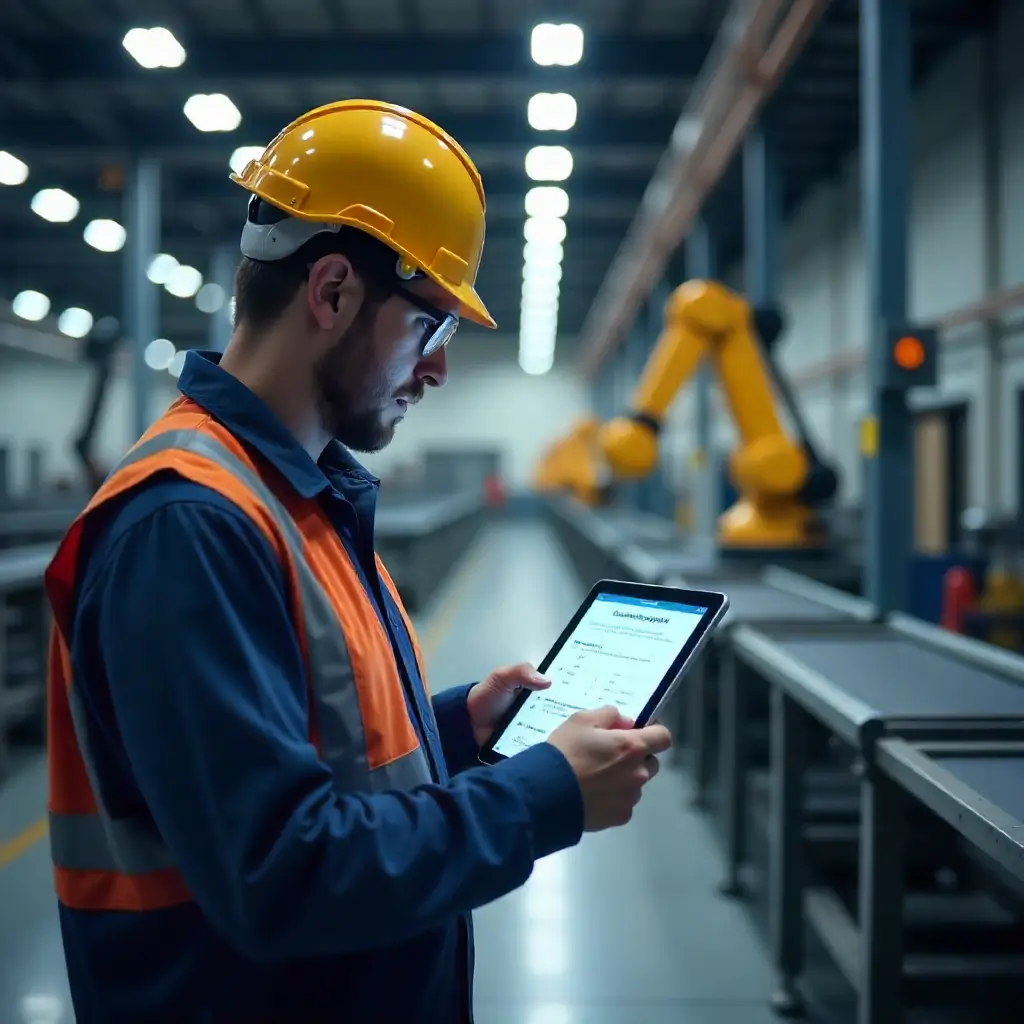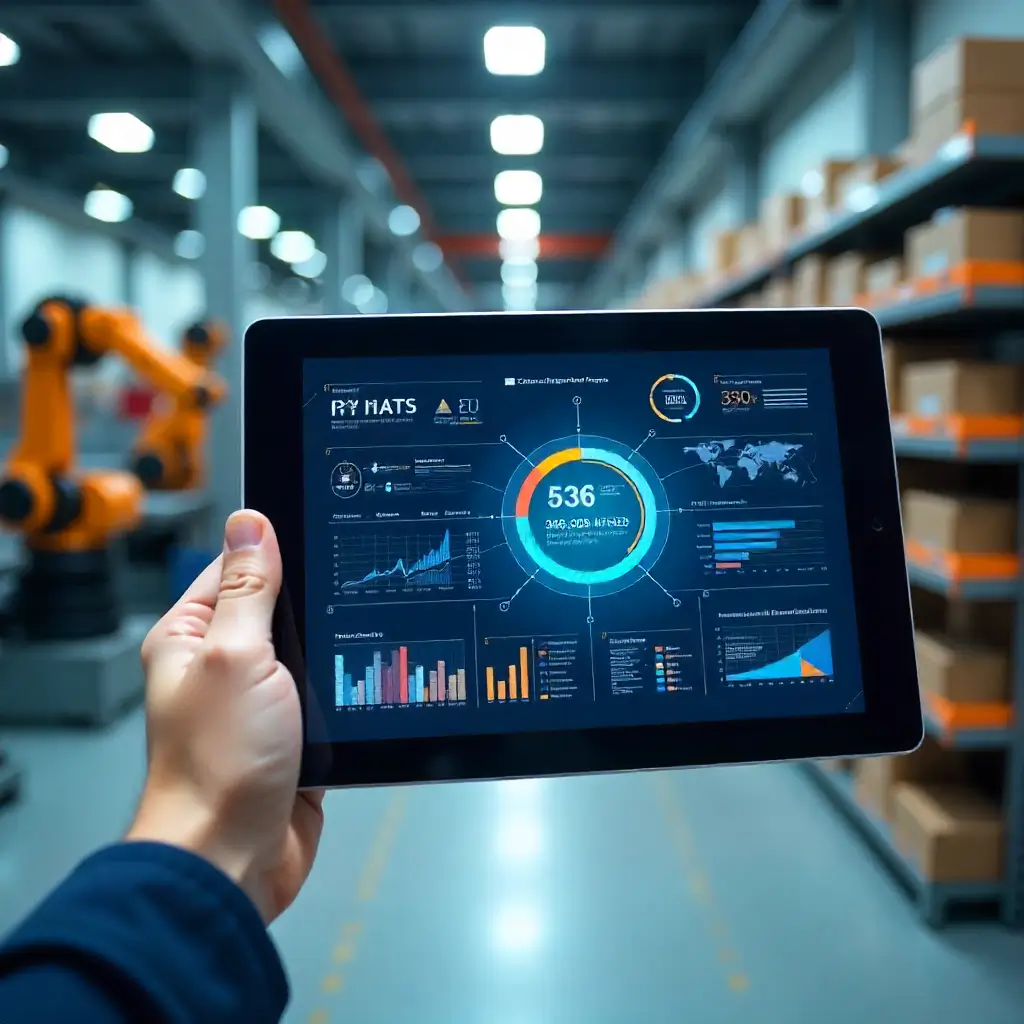
Home page / AI for Manufacturing
AI for Manufacturing: Intelligent Factories & Optimized Profits
With AI in manufacturing solutions, DATAFOREST transforms production planning, predictive maintenance, quality control, and supply chain management through automated analytics. They reduce downtime by 20-50%, cut defects by 30-70%, and decrease costs by 15-25%. Results include higher uptime, faster cycles, less waste, and improved profit margins.

Our Services for Big Data in Manufacturing
DATAFOREST transforms operations through data analytics for manufacturing, AI-powered work order management, predictive inventory optimization, and intelligent scheduling systems. The services turn reactive maintenance processes into predictive precision that maximizes efficiency and minimizes downtime.
Autonomous Work Order Intelligence
AI agents automatically create and dispatch work orders from sensor alerts while assigning tasks to optimal technicians based on skills and availability. It cuts scheduling time by 80% and maximizes workforce productivity analytics.
Smart Inventory Optimization
AI in manufacturing predicts spare parts demand using breakdown patterns and supplier data, with agents automatically placing restock orders when needed through procurement automation systems. It prevents stockouts while reducing inventory costs by up to 20% and improving supplier performance analytics.
Dynamic Maintenance Scheduling
AI in manufacturing analyzes equipment status and production plans to find optimal maintenance windows, using predictive maintenance algorithms and equipment failure prediction models, with real-time rescheduling for urgent situations. It improves SLA compliance and technician productivity.
Intelligent Customer Service
AI in manufacturing assistants handle customer queries about service status and appointments while integrating with CRM systems and manufacturing execution systems to initiate work orders. It reduces call center load by 50-70% and improves satisfaction.
Field Technician Support
Mobile AI in manufacturing companions guide technicians through repairs using real-time manuals, repair history, and diagnostics powered by machine learning maintenance. It speeds repairs and reduces errors from inexperienced staff.
Performance Analytics Dashboard
Unified dashboards track asset health, downtime patterns, and cost trends with AI in manufacturing data analytics, continuously identifying opportunities for production optimization. It increases ROI visibility for executive decision-making.
SLA Monitoring & Escalation
AI monitors jobs in real-time, alerts before SLA breaches, and automatically reassigns or escalates tasks using downtime prevention strategies. It improves on-time completion rates and client satisfaction.
Real-Life Examples of AI for Manufacturing Companies
Business Excellence Through Big Data in the Manufacturing Industry
DATAFOREST's big data in manufacturing solutions boosts manufacturing performance by 25-50% across production efficiency, equipment reliability, quality control, and inventory management while ensuring workforce safety and regulatory compliance automation.
01
Big data analytics in manufacturing powered monitoring identifies bottlenecks and streamlines workflows, increasing overall equipment effectiveness by 25-35% through six sigma implementation. It delivers significant cost savings and improved productivity through data-driven manufacturing process optimization.
02
Early equipment issue detection reduces unplanned downtime by 40-50% and maintenance costs by 25-30%. Systems extend equipment lifespan while improving operational reliability.
04
Intelligent demand forecasting reduces carrying costs by 20-30% while optimizing stock levels. Improved supplier relationships minimize supply chain disruptions.
05
Benefits of energy management optimization and real-time data monitoring in manufacturing include predictive safety systems that prevent incidents and ensure regulatory compliance. Creates safer working environments while reducing liability and improving employee satisfaction.

Defects crashing your production party?
AI spots issues early, reducing waste 30-40%.
Data-Driven Manufacturing Technologies

Pandas

SciPy

TensorFlow

Numpy

ADTK

DBscan

G. AutoML

Keras

MLFlow

Natural L. AI

NLTK

OpenCV

Pillow

PyOD

PyTorch

FB Prophet

SageMaker

Scikit-learn

SpaCy

XGBoost

YOLO
FAQ On AI In Manufacturing
Can your predictive maintenance solutions integrate with our existing equipment?
Our AI predictive maintenance manufacturing solutions integrate with most industrial equipment through standard protocols like OPC-UA, Modbus, and direct sensor connections. We also develop custom data connectors for proprietary systems and legacy equipment. This approach preserves your existing workflows while enabling advanced data analytics in the manufacturing industry.
What ROI can we expect from implementing manufacturing analytics solutions?
Most AI for manufacturing companies see a 15–30% cost reduction within 12–18 months through decreased downtime, optimized inventory, and higher efficiency. Savings often include a 40–50% drop in unplanned downtime and 20–30% lower maintenance costs. With data analytics for manufacturing, payback periods typically range from 8 to 15 months.
How do we get started with manufacturing intelligence solutions from DATAFOREST?
We begin with a free assessment of your manufacturing data management setup to identify high-impact use cases. We then develop a proof-of-concept targeting your biggest challenges—whether in innovative factory solutions, quality control, or big data analytics—before scaling across facilities.
Can your solutions work with legacy manufacturing equipment and older systems?
We specialize in modernizing legacy systems through edge computing devices and retrofit sensors that don't require equipment modifications. Our AI in manufacturing solutions bridge old and new systems using protocol converters and custom APIs. We've successfully integrated equipment from the 1980s with modern AI analytics platforms.
What types of manufacturing data can your platforms analyze and process?
We process sensor data, production metrics, quality measurements, maintenance records, inventory levels, and operator inputs. Our platforms handle structured data from ERP/MES systems and unstructured data, such as maintenance logs, images, and audio from equipment. Combining historical and real-time manufacturing data collection enables more accurate manufacturing data analysis.
How do you handle multi-site manufacturing operations and global facilities?
Our cloud-based architecture unifies manufacturing data management across multiple sites, providing both local low-latency processing and global benchmarking. Data analytics in the manufacturing industry dashboards can be customized for each site while contributing to corporate-wide data-driven manufacturing initiatives.
Can your AI models adapt to our specific manufacturing processes and product lines?
Our AI models are trained on your specific data patterns, production cycles, and quality standards. The system applies data science in manufacturing to learn from your operations, continually improving predictive accuracy over time. Continuous learning capabilities allow models to adapt as your processes evolve and improve over time.
Let’s discuss your project
Share project details, like scope or challenges. We'll review and follow up with next steps.

.svg)
.svg)

.svg)



.svg)

















.webp)








